The system shown adjacent is in equilibrium. Find the acceleration of the blocks A B & C all of equal masses m at the instant when Assume springs to be ideal a The spring between ceiling & A is cut. b The string inextensible between A & B is cut. c The spring between B & C is cut. Also find the tension in the string when the system is at rest and in the above 3cases. Solve 3cases seperately.
Related Solutions
The system shown adjacent is in equilibrium. Find the acceleration of the blocks A,B &C all of equal masses m at the instant when
(Assume springs to be ideal)
(i) The spring between celling & A is cut.
(ii) The spring (inextensible) between A&B is cut.
(iii) The speing between B & C is cut.
Also find the tension in the string when the system is at rest and in the above 3 cases.
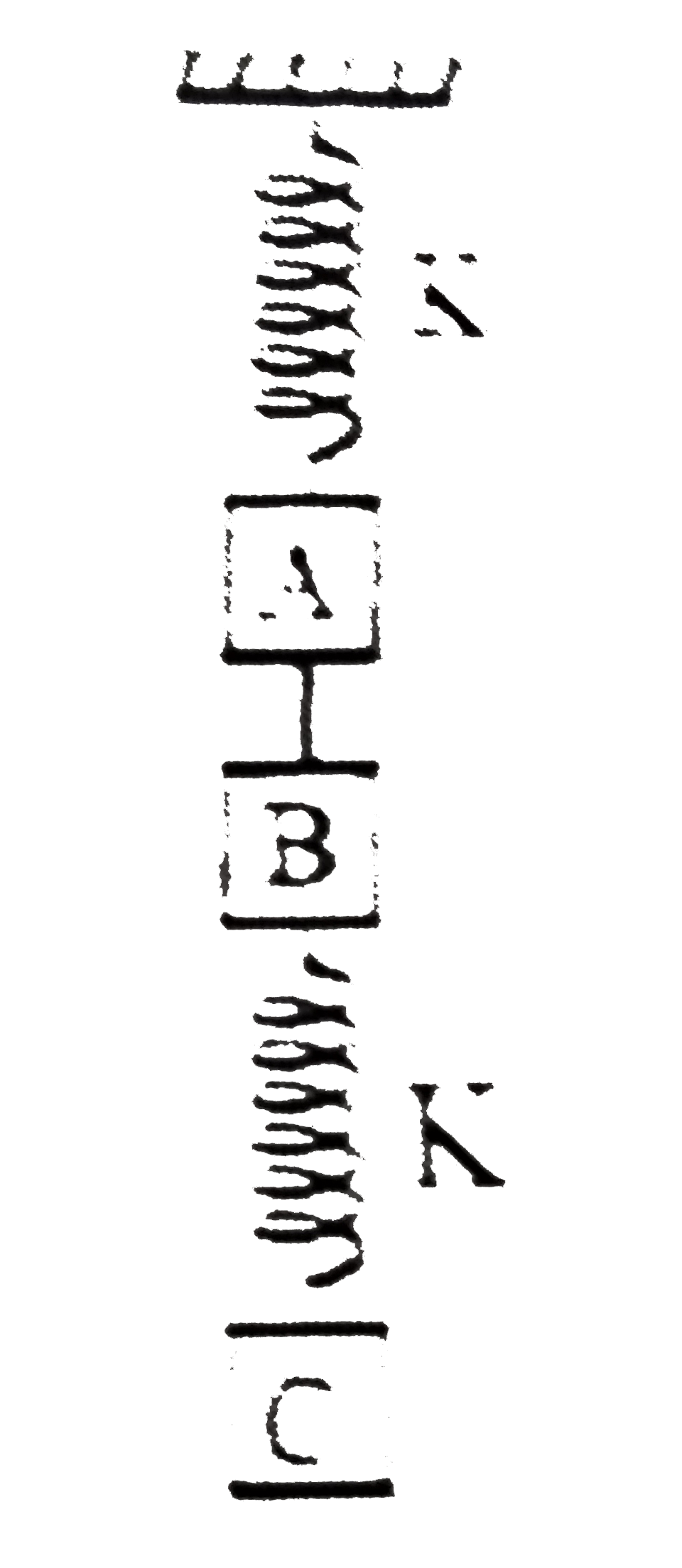 View Solution
View SolutionThe system shown adjacent is in equilibrium. Find the acceleration of the blocks A,B &C all of equal masses m at the instant when
(Assume springs to be ideal)
(i) The spring between celling & A is cut.
(ii) The spring (inextensible) between A&B is cut.
(iii) The speing between B & C is cut.
Also find the tension in the string when the system is at rest and in the above 3 cases.
 View Solution
View SolutionThe system shown adjacent is in equilibrium. Find the acceleration of the blocks A,B &C all of equal masses m at the instant when
(Assume springs to be ideal)
(i) The spring between celling & A is cut.
(ii) The spring (inextensible) between A&B is cut.
(iii) The speing between B & C is cut.
Also find the tension in the string when the system is at rest and in the above 3 cases.
 View Solution
View SolutionBlocks A and B shown in the figure are having equal masses m. The system is released from rest with the spring unstretched. The string between A and ground is cut, when there is maximum extension in the spring. The acceleration of centre of mass of the two blocks at this instant is
View SolutionBlocks A and B shown in the figure are having equal masses m. The system is released from rest with the spring unstretched. The string between A and ground is cut, when there is maximum extension in the spring. The acceleration of centre of mass of the two blocks at this instant is
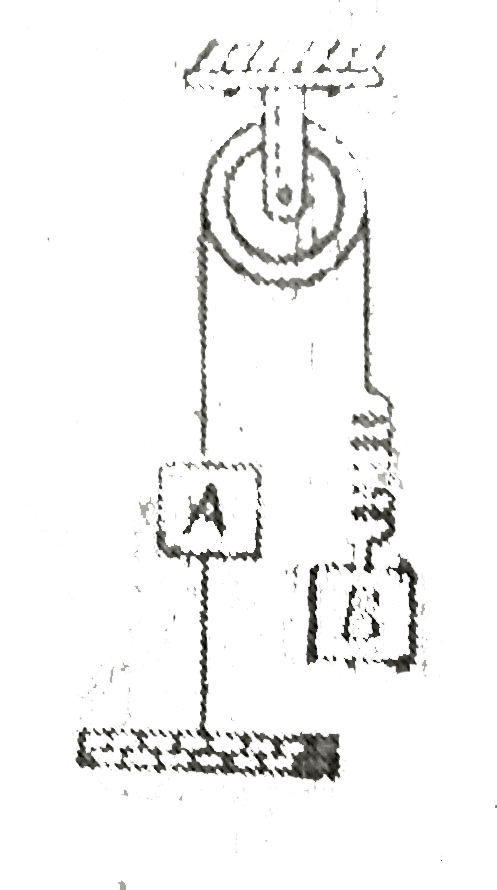 View Solution
View SolutionThe system shown in the figure is in equilibrium at rest. The spring and string are massless Now the string is cut. Find the acceleration of the blocks just after the string is cut.
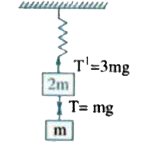 View Solution
View SolutionThe system shown in the figure is in equilibrium at rest. The spring and string are massless Now the string is cut. Find the acceleration of the blocks just after the string is cut.
View SolutionThe system shown in the figure is in equilibrium at rest. The spring and string are massless Now the string is cut. Find the acceleration of the blocks just after the string is cut.
 View Solution
View SolutionThe system shown in the figure is in equilibrium at rest . The spring and string are massless Now the string is cut . Find the acceleration of the blocks just after the string is cut
View SolutionThe string between blocks of mass m and 2m is massless and inextensible. The system is suspended by a massless spring as shown. If the string is cut find the magnitudes of accelerations of mass 2m and m (immediately after cutting)
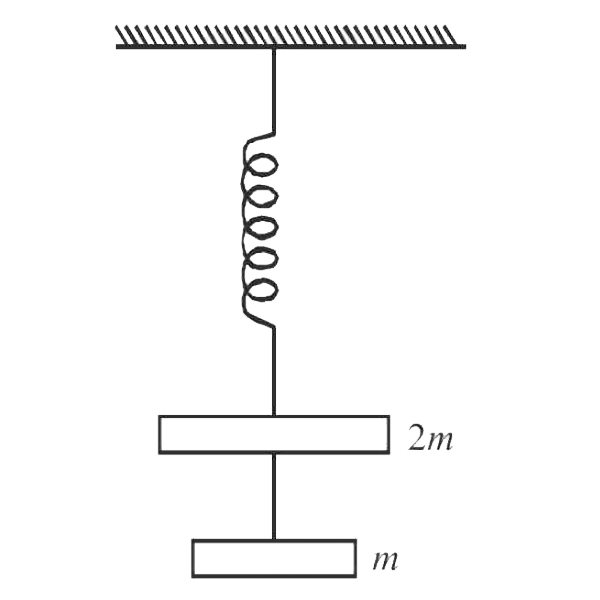 View Solution
View SolutionThe system shown in the figure is in equilibrium and at rest. The spring and the string are massless, now the string is cut. The mass 2 m and the acceleration of m immediately after the string is cut will be:
View SolutionIn the figure shown, pulley and spring are ideal and strings are lilght and inextensible. Intially all the bodies are at rest when string connecting A and B is cut. Find initial acceleration of C .
View SolutionIn the figure shown, pulley and spring are ideal and strings are lilght and inextensible. Intially all the bodies are at rest when string connecting A and B is cut. Find initial acceleration of C .
View SolutionThe system shown in the figure is initially in equilibrium. A is of mass 2 m and B,C D and E are of mass m Certain actions are performed on the system. Every action has been taken individually when the system is intact. Find the direction and magnitude of acceleration of the blocks after each action of the following actions has been taken
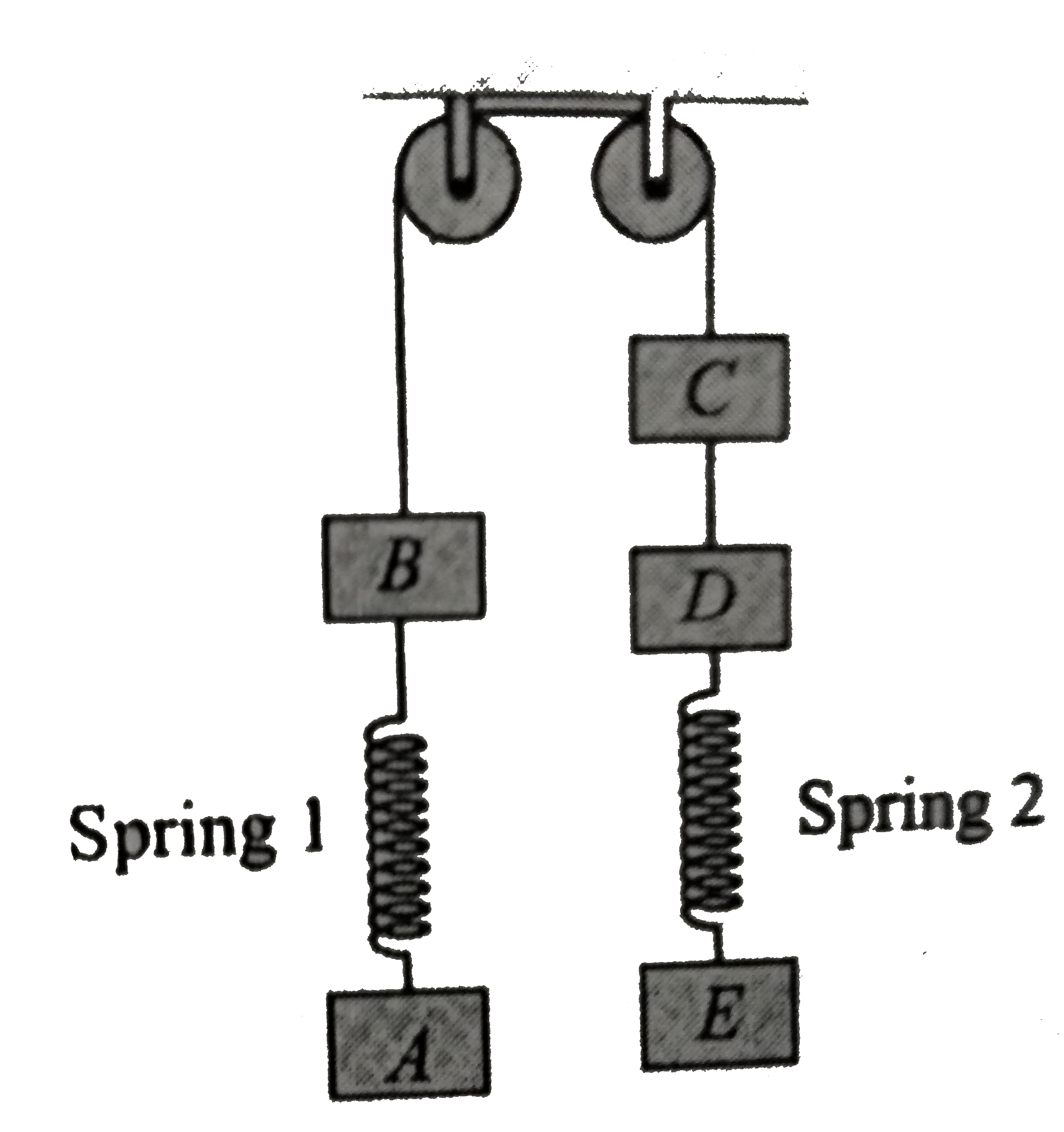
View SolutionThe system shown in the figure is initially in equilibrium. A is of mass 2 m and B,C D and E are of mass m Certain actions are performed on the system. Every action has been taken individually when the system is intact. Find the direction and magnitude of acceleration of the blocks after each action of the following actions has been taken

View SolutionThe system shown in the figure is initially in equilibrium. A is of mass 2 m and B,C D and E are of mass m Certain actions are performed on the system. Every action has been taken individually when the system is intact. Find the direction and magnitude of acceleration of the blocks after each action of the following actions has been taken

View SolutionThe system shown in the figure is in equilibrium and all the blocks are at rest. Let the mass of the strings, pulley and spring be negligible relative to the mass of the blocks and friction is absent. Find the acceleration of block C, immediately after cutting string 1.
View SolutionSystem shown in fig is in equilibrium and at rest. The spring and string are massless now the string is cut. The acceleration of mass 2m and m just after the string is cut will be:
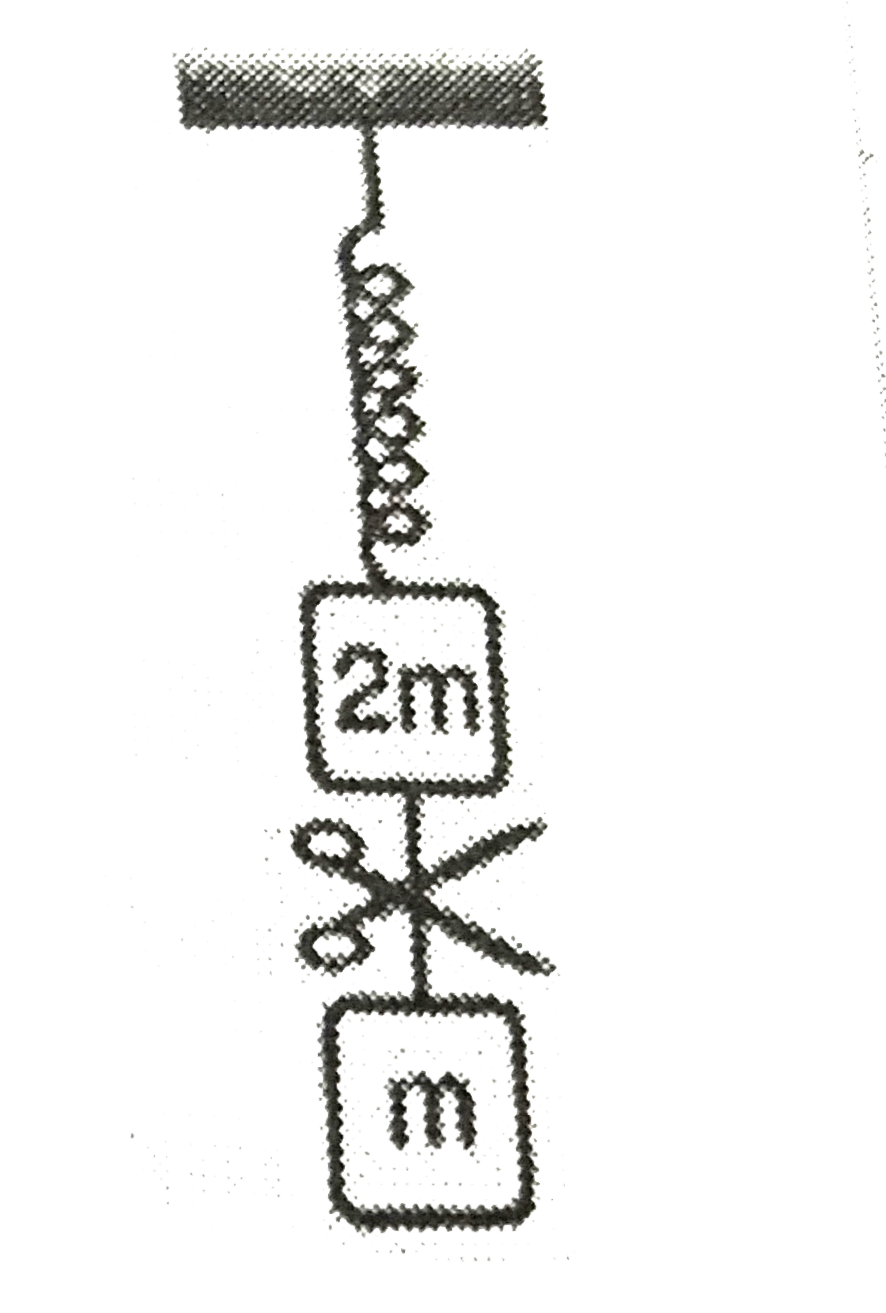 View Solution
View SolutionThe system shown in the following figure is in equilibrium and at rest. The spring and string are massless. Now, the string is cut. The acceleration of mass 2m and m, just after the string is cut, will be
 View Solution
View SolutionSystem shown in fig is in equilibrium and at rest. The spring and string are massless now the string is cut. The acceleration of mass 2m and m just after the string is cut will be:
View Solution
